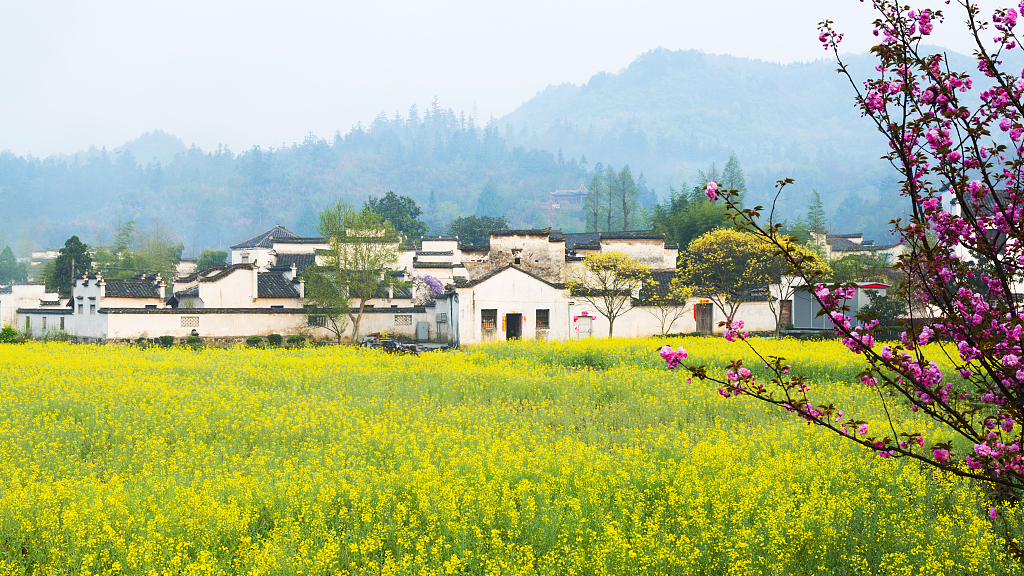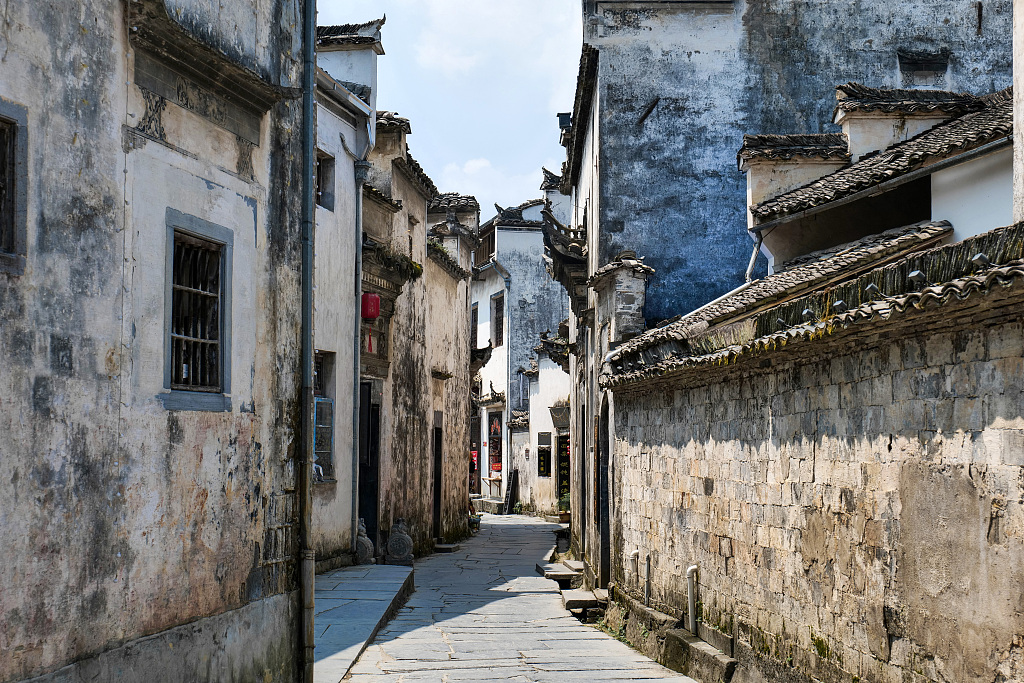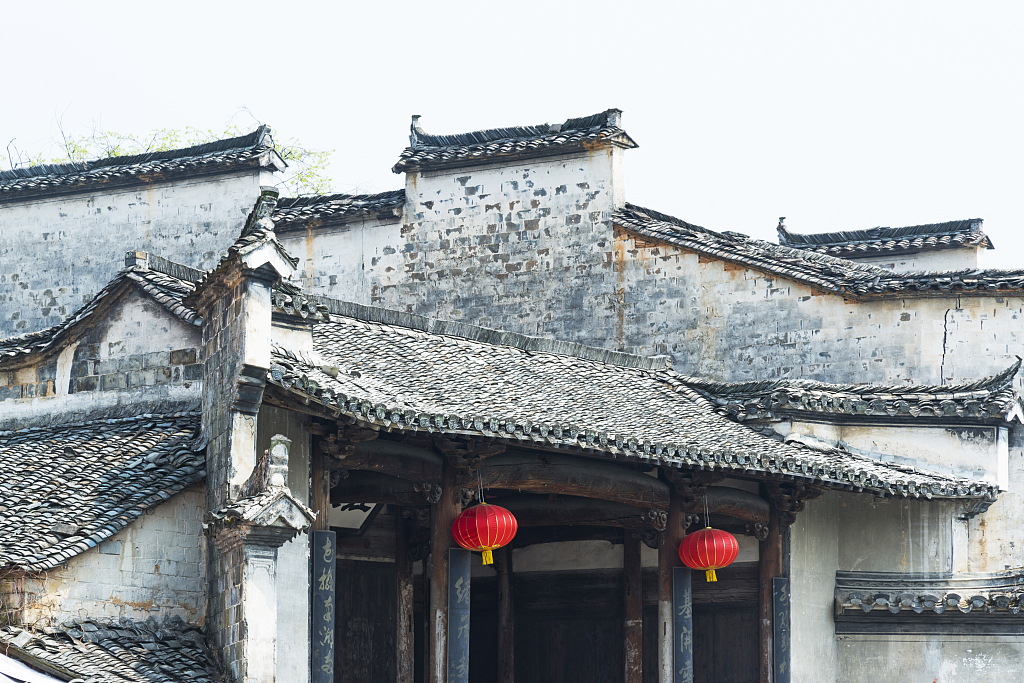
Photo shows the spring scenery of Xidi Village with oilseed rape flowers in full bloom. /CFP
Photo shows the spring scenery of Xidi Village with oilseed rape flowers in full bloom. /CFP
As the Chinese tourism market gradually recovers from the ravages of the pandemic, Xidi Village saw a peak in visitors during the recent Spring Festival holiday.
Located in Yixian County, Anhui Province, this idyllic pastoral spot preserves to a remarkable extent the appearance of a traditional non-urban settlement in China, most of which have disappeared over the past century.
The village has outstanding cultural values and tourism services and was included in the first batch of the United Nations World Tourism Organization (UNWTO)'s "Best Tourism Villages" list in 2021.

Photo shows an alleyway and some of the ancient architecture of Xidi Village in Anhui Province. /CFP
Photo shows an alleyway and some of the ancient architecture of Xidi Village in Anhui Province. /CFP
Xidi retains the original features of Anhui villages dating back to between the 14th and 20th centuries, including the overall landscape, architectural form, decoration, and construction techniques.
According to statistics, the Xidi Scenic Area has more than 300 ancient residential buildings, three ancestral halls, and one memorial archway, all from the Ming and Qing dynasties.
Among the 300 ancient homes, 124 are well preserved, casting Xidi Village as a "Museum of Ming and Qing Residential Buildings in China."
These ancient buildings are unique in style and beautiful in design, serving as a model of Hui-style architecture. Featuring grey tiles and white walls, these old homes have a simple and elegant color design. With a backdrop of clear lakes and rivers and green mountains, the grey buildings fit neatly into their elegant natural surroundings.

"Horse Head Walls" is a unique feature of the architecture in Xidi Village. /CFP
"Horse Head Walls" is a unique feature of the architecture in Xidi Village. /CFP
Another unique feature of the local architecture is the "Horse Head Walls," also known as "Fire-proof Walls." In densely populated villages, preventing fires from spreading has been a constant challenge.
However, these special walls with their raised "horse-head" decorations can prevent blazes from spreading from one home to another.
While that was the original purpose of these walls built on top of roofs, in Xidi, they also add a heightened sense of beauty to the architecture.
Relying on its abundant cultural and natural resources, Xidi Village is developing its tourism industry in a sustainable way. The village has also focused on protecting ancient buildings and its local cultural heritage.
The village's sustainable development has provided important references for not only ancient villages in China, but also those around the world.